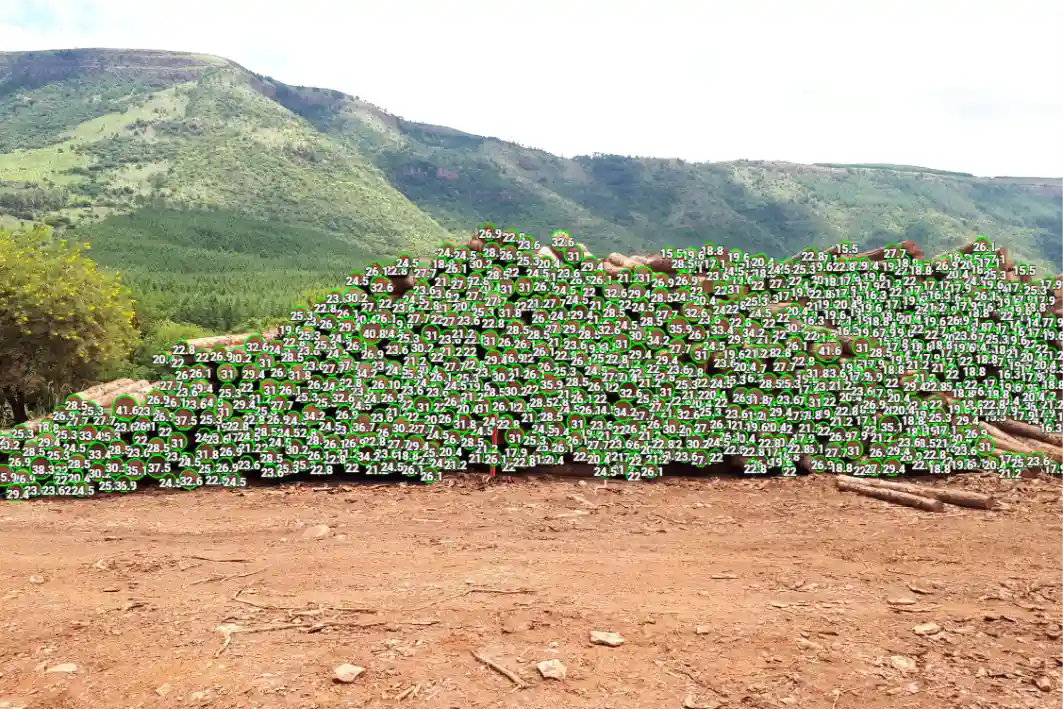South Africa’s potential in the forestry industry has been growing year after year and, in a short time, the plantations of species such as Pinus and Eucalyptus reached a competitive level on an international basis due to the high demand for softwood, especially from China. Still, South Africa still imports the material, as the production is not able to sustain the demand inside the country. This fact puts the forestry industry in the middle of decisions that need to be addressed in order to make processes easier, more efficient and profitable.
The estimated number of employees on the sector already surpassed 100,000 and this number continues to grow as the demand is in constant change for competitiveness with producers from different regions. The production in South Africa targets sawmills and paper production.
By seeing the potential market in the region and the challenges of the current demands, our team understands that digitalization will make importing and exporting processes, as well as local trade more efficient and trustworthy. This is exactly the reason why Timbeter has been working together with potential clients from South Africa in order to establish standards according to its capacity and future potential. We also intend to clear out the named “gray areas” by providing accurate data for log classification, since there’s still a clear difference between the classification of pulpwood and sawmill logs.
“Low Cost Sawmills often cut logs that are classified as pulpwood and not sawlogs. Conversely pulpwood being marketed as such invariably contains a surprisingly high volume of oversized logs, which should be classified as sawlogs and not as pulpwood. In the absence of appropriate data in this exercise, sawlogs have been taken to include 70% of ‘a’ class logs.”
Crickmay and Associates – Supply and Demand Study of Softwood Sawlog & Sawn Timber
Thinking about the needs of our users in South Africa, we are happy to introduce the South African Volume Formulas to our users with the newest Timbeter update. If you haven’t downloaded it yet, you can check our easy tutorial to get started with our solution in an easy and digital way.
The South African Formula calculates diameters of logs under the bark from thin ends and is recorded in uneven numbers only. With a taper of 1cm/m for softwoods and 0.8cm/m for hardwoods, the volume (m³) of logs can be calculated by following formulas:

dt = thin-end diameter, under-bark, cm
V = under-bark volume, m³
To exemplify the use of the formula, some real life situations can be used.
In this case, it’s easy to have the volume results for, as an example, a 6.6m log with the smaller ends under the bark diameter of 33.6cm.

As it’s already very well known by our clients, Timbeter has more than 15 formulas for volume measurement of logs, following the standards from all over the world. You can check the most used formulas here and also understand how the rounding rules work. If you are in a specific region of the world or if your company has special requirements, you can always get in contact with our team, which will be able to find the most suitable option to make your measurements more accurate and fast, by advising on a specific formula or making custom changes upon request. Contact us at info@timbeter.com.
Reference:
Crickmay and Associates. Supply and Demand Study of Softwood Sawlog & Sawn Timber in South Africa
Bredenkamp, B and Upfold, S. 2012. South African Forestry Handbook. Stellenbosch: The South African Institute of Forestry.
